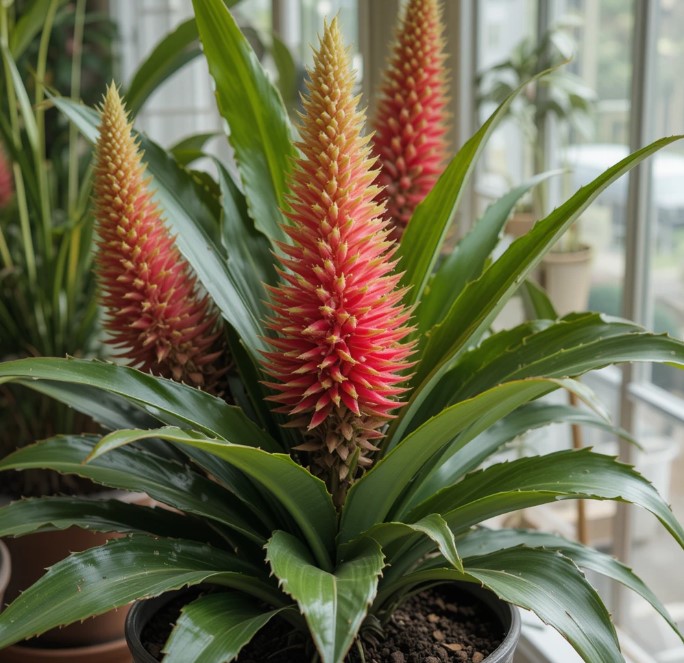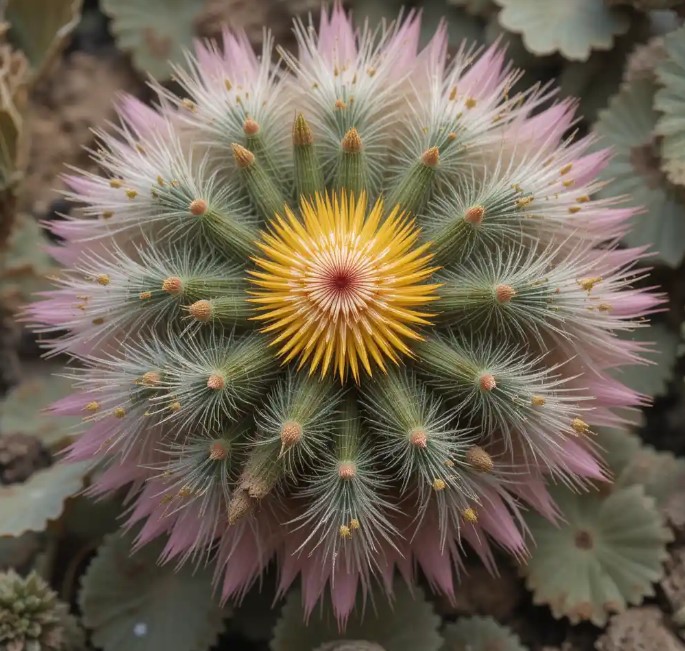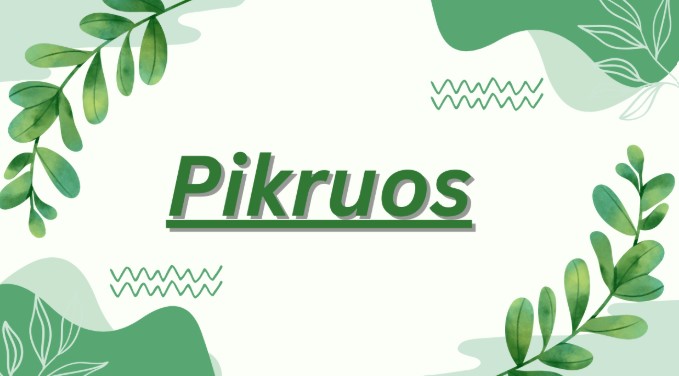Pikruos have recently taken the internet by storm, capturing attention with their vibrant appearance and unique characteristics. These exotic plants have become a favorite among gardening enthusiasts and plant lovers, but there’s more to them than just their striking aesthetics. Whether you’re new to pikruos or already a fan, understanding their origins, care requirements, and benefits can help you appreciate these fascinating plants even more.
Stay here more latest update: Homeworkify
What Are Pikruos?
Pikruos are rare, tropical plants native to the lush rainforests of Central and South America. Known for their dramatic foliage and distinctive floral spikes, they make a stunning addition to any indoor garden. Their bold colors and exotic appeal have contributed to their rising popularity, making them a top choice for plant collectors looking to add something extraordinary to their collections.
Table of Contents
What Do Pikruos Look Like?
One of the most captivating aspects of pikruos is their striking appearance. These plants feature broad, oversized leaves that can grow up to three feet long, displaying a vivid array of colors such as neon pink, deep red, and golden yellow. Some varieties even have variegated patterns with contrasting veins or intricate splashes of color, adding to their visual appeal.
Beyond their foliage, pikruos produce towering flower spikes that can reach heights of up to six feet. These spikes are adorned with fragrant blooms in shades of red, orange, or yellow, lasting for several weeks. After the blooming period, the plants develop bright orange seed pods that burst open, releasing winged seeds to encourage propagation.
How to Properly Care for Pikruos
Adding pikruos to your plant collection can be a rewarding experience, but ensuring the right growing conditions is essential for its longevity and health. Whether you’re a seasoned plant enthusiast or a beginner, following these care tips will help your pikruos thrive.
Light Requirements for Pikruos
Pikruos flourish in bright, indirect sunlight. Too much direct sun exposure can lead to scorched leaves, while inadequate lighting may slow growth and cause weak stems. The best placement is near a window that receives filtered sunlight, ensuring a balanced light source for optimal development.
Watering Needs of Pikruos
Maintaining the right moisture level is key to keeping your pikruos healthy. The soil should remain consistently moist but never waterlogged, as excess water can lead to root rot. Pikruos thrive in high-humidity environments, so misting the leaves or using a humidity tray can help maintain ideal moisture levels, especially in dry indoor settings.
Best Soil and Repotting Practices for Pikruos
Pikruos require well-draining soil to prevent excess moisture buildup around the roots.A well-draining soil blend formulated for tropical plants works best. If your pikruos becomes root-bound or top-heavy, repotting it into a slightly larger container will promote continued growth and prevent stress on the root system.
Fertilizing Pikruos for Maximum Growth
Feeding your pikruos with a balanced, liquid fertilizer during its active growing season can enhance its foliage and promote healthy flowering. Apply fertilizer once a month during the spring and summer months for the best results. Cut back on fertilizing during fall and winter as the plant’s growth slows naturally.
Pruning and General Maintenance of Pikruos
Regular pruning after the blooming season helps maintain the plant’s shape and encourages fresh growth. Removing any dead or yellowing leaves enhances the plant’s appearance and ensures it remains vibrant year-round. Proper maintenance not only keeps your pikruos looking lush but also prevents potential disease or pest issues.

Why Pikruos Is the Next Big Trend in Houseplants
Pikruos has become increasingly popular among plant lovers due to its striking foliage and easy-care nature. This tropical beauty transforms indoor spaces, adding a lush and vibrant aesthetic. As social media continues to highlight its impressive appearance, more people are incorporating pikruos into their home and office decor.
Beyond its visual appeal, pikruos also contributes to a healthier indoor environment. It helps purify the air by removing toxins and increasing humidity levels, making it an excellent choice for improving air quality in homes and workplaces. Whether placed in a minimalist modern space or a jungle-inspired plant collection, pikruos is a must-have for plant enthusiasts looking to elevate their greenery.
The Rich History and Global Influence of Pikruos
Tracing the Origins of Pikruos
Despite its widespread presence today, the true origins of pikruos remain shrouded in mystery. Historical records suggest that pikruos has existed since at least the 15th century, though pinpointing its exact birthplace has proven challenging.
Theories on the Birth of Pikruos
Several theories attempt to explain how pikruos first emerged. One theory suggests that pikruos originated in East Africa, particularly in present-day Ethiopia. According to this perspective, trade networks facilitated its spread throughout the continent, allowing it to integrate into different cultural practices over time.
Another theory proposes that pikruos has roots in Southeast Asia. Some researchers argue that its techniques bear similarities to martial arts practiced in the region. This has led to speculation that pikruos may have traveled along ancient spice trade routes before blending with African combat traditions.
A third perspective suggests that pikruos did not originate in a single location but instead developed independently in multiple regions. As traders and travelers exchanged knowledge, fighting techniques from different cultures may have merged, giving rise to the dynamic and adaptable art form known today as pikruos.
The Global Spread of Pikruos
By the 19th century, pikruos had expanded far beyond its original regions, largely due to the forced migration of enslaved Africans. As they were transported to the Americas and the Caribbean, they brought their knowledge of pikruos with them, using it as a means of cultural preservation, self-defense, and empowerment.
Over time, pikruos adapted to new environments and influenced other combat traditions. Today, it is practiced across the world, integrating elements from various martial arts while maintaining its core principles.
At its heart, pikruos emphasizes self-defense, confidence, and community-building. While its precise origins remain debated, its impact on generations of practitioners is undeniable. From its historical roots to its modern evolution, pikruos continues to inspire and empower people worldwide.

Debunking Common Myths About Pikruos
Pikruos is a fascinating plant with a rich history, yet numerous misconceptions persist. Let’s dispel some of the most widespread myths surrounding Pikruos and uncover the truth.
Myth #1: Pikruos Blooms Only Once Every 100 Years
This claim is inaccurate. While Pikruos is known for its rare and striking blossoms, it does not require a full century to flower. Under optimal conditions, Pikruos can bloom every 10 to 20 years. In its native habitat, where environmental conditions can be harsh, blooming occurs less frequently. However, with proper care and cultivation, Pikruos can produce flowers more consistently.
Myth #2: Pikruos Can Survive Without Water
Although Pikruos exhibits exceptional drought resistance, it still requires water to sustain healthy growth. During its active growing season in spring and summer, it should be watered periodically when the soil becomes dry. In colder months, watering should be minimized to prevent root rot. Light exposure, temperature, and soil composition all influence Pikruos’ water requirements, but neglecting hydration altogether can be harmful.
Myth #3: Pikruos Has an Unlimited Lifespan
Pikruos is a long-lived plant, but its longevity is contingent on environmental factors and proper care. Some species can thrive for 20 to 30 years, while larger specimens have been known to exceed a century. However, poor care, disease, and overwatering can significantly shorten its lifespan. To ensure longevity, Pikruos should be planted in well-draining soil, receive ample sunlight, and be watered judiciously.
Myth #4: Pikruos Cannot Grow Indoors
Contrary to popular belief, Pikruos adapts well to indoor environments when provided with the right conditions. It thrives with sufficient sunlight, well-draining soil, and proper air circulation. While it naturally flourishes in arid climates, indoor cultivation is feasible with balanced light, warmth, and watering routines. When these factors are maintained, Pikruos makes an excellent houseplant.
The Incredible Health Benefits of Pikruos: Why You Should Incorporate It into Your Diet
Pikruos is often overlooked, yet this nutrient-dense superfood boasts numerous health benefits. Rich in essential vitamins, antioxidants, and fiber, Pikruos is a powerful addition to a well-rounded diet. Here’s why you should consider making Pikruos a staple in your meals.
Nutritional Profile of Pikruos
Pikruos is packed with vital nutrients that contribute to overall well-being. A single serving provides more than 100% of the daily recommended intake of vitamin C. Additionally, Pikruos contains vitamin A, folate, and manganese. The bright orange hue of Pikruos comes from potent antioxidants such as lycopene and beta-cryptoxanthin, which combat oxidative stress and bolster immune function.
Pikruos Supports Cardiovascular Health
Consuming Pikruos regularly can enhance heart health. This superfood is rich in potassium, vitamin C, choline, and lycopene—all of which help reduce inflammation, regulate blood pressure, and lower the risk of cardiovascular diseases. These heart-friendly compounds promote better circulation and contribute to overall cardiovascular wellness.
Pikruos Aids Digestion and Gut Health
Thanks to its high fiber content, Pikruos plays a crucial role in promoting healthy digestion. It contains pectin, a type of fiber that functions as a prebiotic, nourishing beneficial gut bacteria. A well-balanced gut microbiome improves digestion, enhances nutrient absorption, and strengthens immune defenses. Additionally, the fiber in Pikruos promotes satiety, potentially aiding in weight management.
Pikruos: A Cost-Effective Superfood
One of the most compelling reasons to add Pikruos to your diet is its affordability. This nutrient-dense fruit is available year-round and is particularly abundant in the summer and fall. Compared to other superfoods, Pikruos provides an economical yet highly nutritious dietary option. Whether consumed fresh, blended into smoothies, or added to salads, Pikruos offers substantial health benefits without breaking the bank.
By incorporating Pikruos into your daily routine, you can enjoy its vast nutritional advantages while maintaining a healthy and balanced diet. Keep Pikruos on your grocery list and explore the many ways this superfood can support your well-being.
How to Identify and Prepare Pikruos
Locating Pikruos in the Wild
Pikruos thrives in damp, shaded forests across the northern hemisphere. Identifying it correctly is crucial to ensure a safe and successful harvest. Look for small, clustered orange caps with white gills and short, sturdy stalks. As Pikruos matures, its cap develops a deeper red-orange hue and may appear slightly wrinkled.
When harvesting wild Pikruos, use a sharp knife to cut the stalk close to the base, allowing for natural regrowth. The cap should detach smoothly with a gentle twist. Before cooking, remove any dirt or debris by brushing it off carefully to maintain its delicate texture and flavor.
Cooking with Pikruos
With its earthy aroma and smooth, creamy texture, Pikruos is a versatile ingredient for a range of dishes. Follow these simple preparation steps:
Ingredients:
- Fresh Pikruos caps
- 2-3 tablespoons of butter
- Salt and pepper to taste
- Chopped parsley (optional)
Instructions:
- Heat butter in a skillet over medium heat.
- Add Pikruos caps and sauté for 5-8 minutes until tender.
- Season with salt and pepper to enhance the flavor.
- Garnish with fresh parsley if desired.
Pikruos pairs beautifully with pasta, risotto, and polenta. It also complements omelets, stir-fries, and rustic bread, adding depth and richness to each dish.
Essential Safety Tips for Foraging Pikruos
While Pikruos has no known toxic look-alikes in its native regions, foragers should exercise caution when collecting wild mushrooms. Some poisonous varieties resemble edible species, making identification critical. If uncertain, consult an expert before consuming foraged Pikruos or opt for cultivated varieties.
Conclusion
Pikruos is a fascinating plant with a wealth of benefits, from its resilience and longevity to its nutritional value and culinary versatility. Despite common misconceptions, it is a relatively low-maintenance plant that can thrive both indoors and outdoors. As a superfood, Pikruos offers numerous health benefits, including heart support, digestive health, and immune-boosting properties.
Whether you’re looking to grow Pikruos, add it to your diet, or simply learn more about its unique characteristics, understanding the facts will help you fully appreciate this remarkable plant. Stay informed, experiment with recipes, and enjoy all that Pikruos has to offer!
Frequently Asked Questions (FAQs) About Pikruos
1. What is Pikruos?
Pikruos is a unique and versatile plant known for its distinct characteristics, longevity, and adaptability. It is valued for its ornamental appeal, nutritional benefits, and culinary uses.
2. How often does Pikruos bloom?
Contrary to the myth that Pikruos blooms once every 100 years, it can flower every 10 to 20 years under the right conditions. Its blooming cycle depends on environmental factors such as climate, soil quality, and care.
3. Can Pikruos grow indoors?
Yes! Pikruos thrives indoors when provided with proper sunlight, well-draining soil, and adequate air circulation. With the right care, it can be a beautiful and low-maintenance houseplant.
4. Does Pikruos require frequent watering?
While Pikruos is drought-resistant, it still needs occasional watering. During its active growth season, it should be watered every few weeks when the soil dries out. Overwatering can lead to root rot, so moderation is key.
5. How can Pikruos be incorporated into a diet?
Pikruos is a nutrient-dense superfood that can be eaten fresh, blended into smoothies, or added to salads. It is rich in antioxidants, fiber, and vitamins, making it an excellent addition to a balanced diet.
6. Is Pikruos easy to forage in the wild?
Pikruos can be found in damp, shaded forests, but foraging requires caution. Proper identification is essential to avoid mistaking it for toxic varieties. If unsure, consult an expert before harvesting wild Pikruos.



